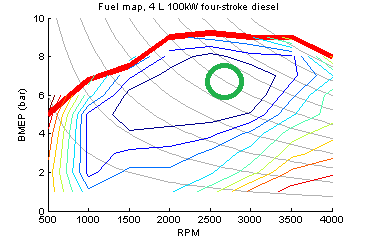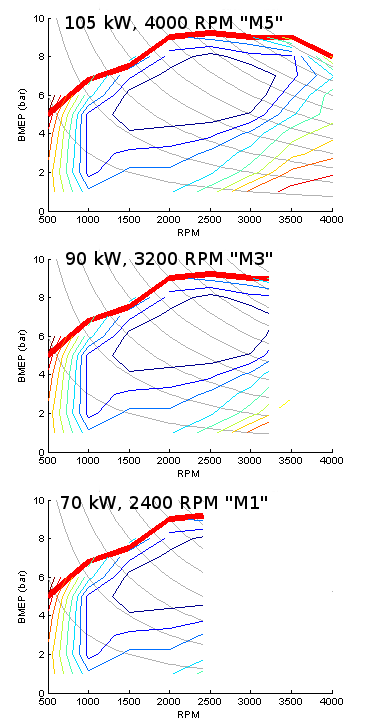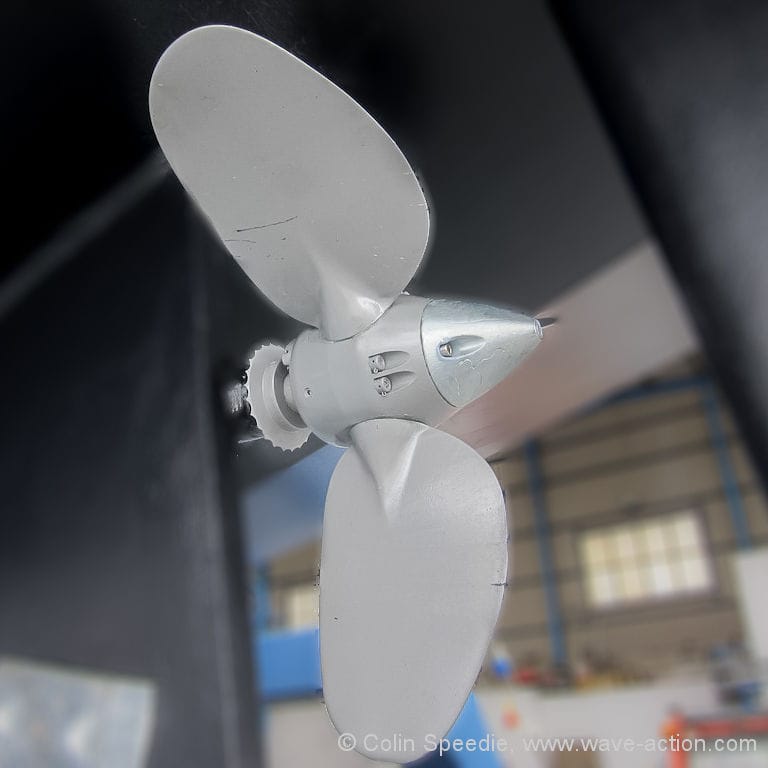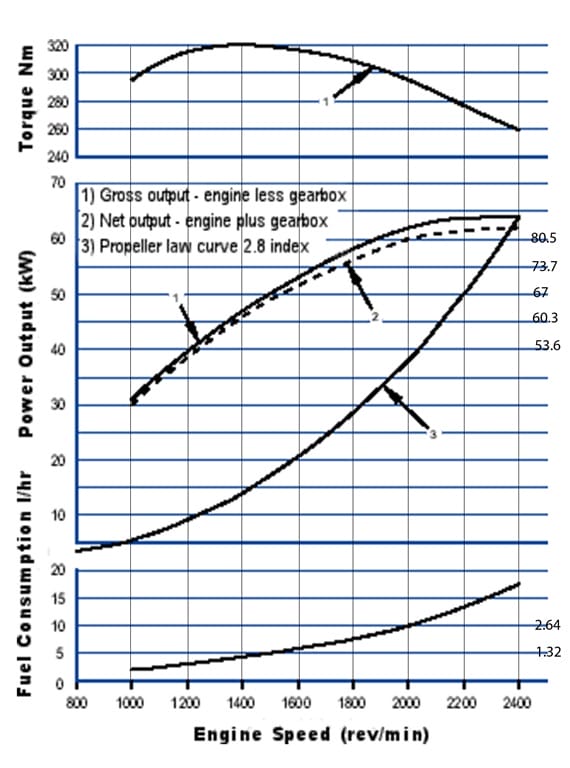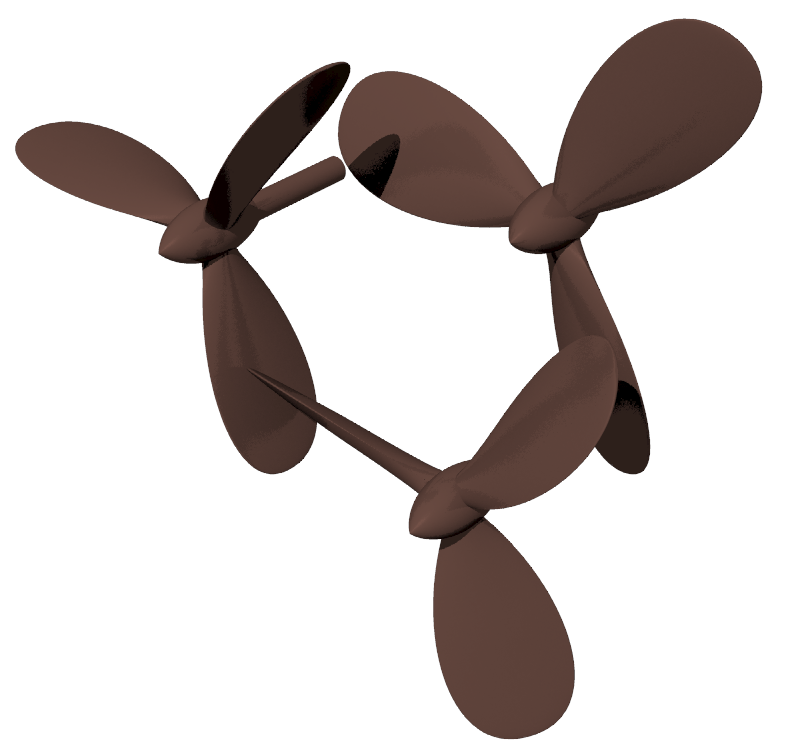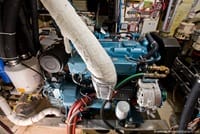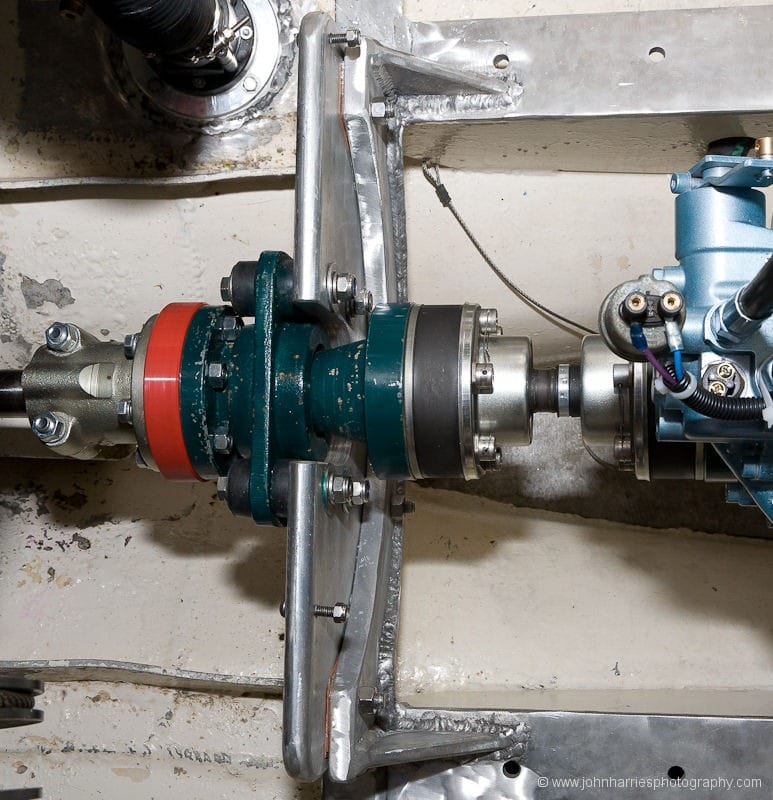Online Book: Engines For Cruising Boats

Matt, AAC Engineering Correspondent, starts this Online Book with an in-depth look at what makes an efficient powertrain and how we can benefit from future developments.
John then shares his experience gained in three re-powers and twenty years of cruising the Arctic, where a reliable engine is literally a lifesaver, including a step-by-step account (with many photographs) of the latest and highly successful repower of Morgan’s Cloud.
If you own a boat with an engine—auxiliary sail or power—you will benefit from reading this, even if you only use the knowledge to better manage your existing engine and, into the bargain, make it last longer and break down less often.
Click for TOC or scroll down for details
Articles in this topic:
- Better Powertrains For Auxiliary Sailboats and Motorboats
- Understanding An Engine Fuel Map
- What Marine Engine Duty Ratings Mean To You
- Understanding Power and Torque
- Applying Power and Torque
- Propeller Efficiency
- How To Stop Killing Your Engine With Kindness
- How To Select The Best Power and Propeller Settings For Your Engine
- Controllable Pitch Propellers (CPPs)
- Selection Criteria For The New Engine For “Morgan’s Cloud”
- New Engine For “Morgan’s Cloud”—What We Chose
- Engine Installation—The Devil Is In The Details
- Perkins M92B, Initial Report Card
- New Engine, The Proof is in The Voyage
- 10 Tips To Save Your Engine From Overheating
- Is Your Engine Properly Fused?
-
Better Powertrains For Auxiliary Sailboats and Motorboats
7 CommentsReading Time: 3 minutesMembersRead more: Better Powertrains For Auxiliary Sailboats and MotorboatsMost yacht engines are horribly inefficient, but that can be fixed. Matt, AAC Engineering Correspondent, introduces the book with this chapter.
-
Understanding An Engine Fuel Map
44 CommentsReading Time: 7 minutesMembersRead more: Understanding An Engine Fuel MapMatt explains those graphs that adorn engine brochures and manuals. Understanding these diagrams is the key to better fuel economy and less problems with your diesel engine.
-
What Marine Engine Duty Ratings Mean To You
8 CommentsReading Time: 6 minutesMembersRead more: What Marine Engine Duty Ratings Mean To YouJust what is a commercial or continuous duty rating on an engine, and should you get that? Matt starts this chapter with the reason that these ratings exist, and then moves on to how to select the correct engine duty rating for a displacement boat.
-
Understanding Power and Torque
15 CommentsReading Time: 8 minutesMembersRead more: Understanding Power and TorqueThere are probably no two words that are more often misused when we talk about boats than power and torque. Eric demystifies both and in the process inoculates us against some potentially expensive misconceptions.
-
Applying Power and Torque
16 CommentsReading Time: 11 minutesMembersRead more: Applying Power and TorqueWhen choosing mechanical gear, especially engines, it’s important to understand power and torque. Many people misuse these terms to sell products, so being informed helps us make better decisions.
-
Propeller Efficiency
48 CommentsReading Time: 9 minutesMembersRead more: Propeller EfficiencyMatt brings his customary clarity to a complicated subject: propellers. Reading this post will cause you a bit of brain sweat, but doing so can help you get big gains in engine efficiency.
-
How To Stop Killing Your Engine With Kindness
88 CommentsReading Time: 8 minutesMembersRead more: How To Stop Killing Your Engine With KindnessRunning your engine at low power settings can slowly kill it. Here’s what to do about that. This could save you a bunch of money and aggravation.
-
How To Select The Best Power and Propeller Settings For Your Engine
84 CommentsReading Time: 8 minutesMembersRead more: How To Select The Best Power and Propeller Settings For Your EngineIn the last chapter in this Online Book, John wrote about how chronic underloading of your engine can wreck it, as well as waste fuel and produce unnecessary carbon. In this chapter we get to the good stuff: how to solve the problem for both new and existing engines.
-
Controllable Pitch Propellers (CPPs)
37 CommentsReading Time: 7 minutesMembersRead more: Controllable Pitch Propellers (CPPs)So far in this Online Book we have learned about the fundamentals of engine and propeller efficiency and, in the last chapter, we looked at a way to make our existing engines a bit more efficient. In this chapter Matt explains a much better way to get the very most out of every drop of diesel fuel.
-
Selection Criteria For The New Engine For “Morgan’s Cloud”
15 CommentsReading Time: 3 minutesMembersRead more: Selection Criteria For The New Engine For “Morgan’s Cloud”Up to now in this online book we have looked at the theory behind designing an efficient engine and drivetrain for a displacement cruising boat. Now we will dive into a real world example as John shares the story of the last repower of Morgan’s Cloud.
-
New Engine For “Morgan’s Cloud”—What We Chose
69 CommentsReading Time: 3 minutesMembersRead more: New Engine For “Morgan’s Cloud”—What We ChoseAll engines have tradeoffs, but by really thinking about the theory we have learned in the first chapters as we select a new engine, we can make a big difference to efficiency and reliability. Here’s an example.
-
Engine Installation—The Devil Is In The Details
33 CommentsReading Time: 7 minutesMembersRead more: Engine Installation—The Devil Is In The DetailsJohn, who has done three of them, fervently hopes that this will be his last repower. Read along as he spends three months fulltime at one of the best diesel repower shops in the world, sweating the details to make this installation the best it can be.
-
Perkins M92B, Initial Report Card
39 CommentsReading Time: 3 minutesMembersRead more: Perkins M92B, Initial Report CardInstalling the new engine was a huge and expensive job, so how did it work out?
-
New Engine, The Proof is in The Voyage
53 CommentsReading Time: 6 minutesMembersRead more: New Engine, The Proof is in The VoyageSo how did the new engine work out over time? What worked well and what did not? It’s all here, together with solid recommendations for transmissions, exhaust systems, and drive line.
-
10 Tips To Save Your Engine From Overheating
49 CommentsReading Time: 11 minutesMembersRead more: 10 Tips To Save Your Engine From OverheatingA diesel engine that’s been badly overheated will probably never run reliably again. A total cruise ruiner. Let’s not let that happen to us.
-
Is Your Engine Properly Fused?
21 CommentsReading Time: 5 minutesMembersRead more: Is Your Engine Properly Fused?I think most of us know that our engine start battery should be fused, but what about the rest of the engine harness. John was shocked to find the answer to that question.


